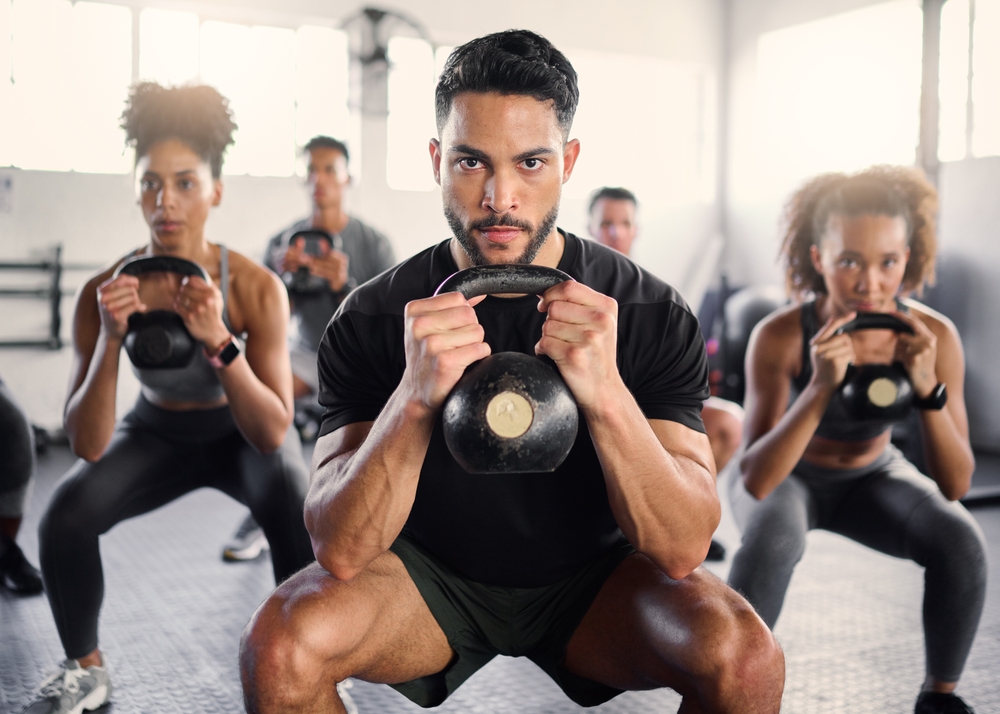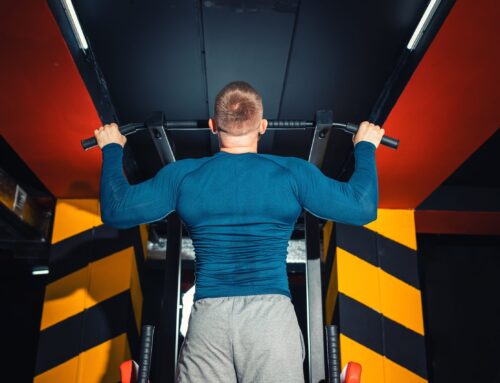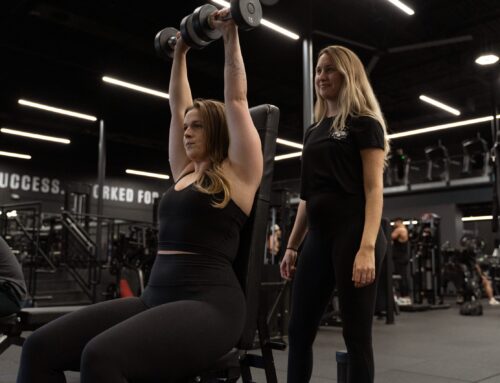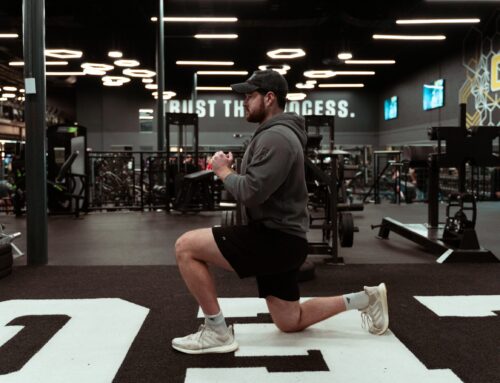Choosing between HIIT, plyo, and weight training to accomplish your fitness goals? In this guide, you’ll find a clear-cut comparison of these effective workout methods, specifically focusing on HIIT, Plyo, and Weight Training. Gain insights into the key strengths and considerations of each to inform your exercise choice, understanding how they can influence weight loss, muscle growth, or sports performance.
Key Takeaways
- HIIT, Plyometrics, and Weight Training each offer unique advantages for different fitness goals, such as enhancing cardiovascular health, improving speed and agility, and increasing muscle strength and endurance respectively.
- While each method is effective, they also have potential drawbacks, including the risk of injury due to high intensity or improper form, and the need for equipment or slower cardiovascular improvements.
- For optimal fitness results, it’s beneficial to incorporate a tailored combination of HIIT, Plyo, and Weight Training into your regimen, considering safety, correct technique, progression, and sufficient rest and recovery.
Understanding HIIT, Plyo, and Weight Training
As you explore the fitness world, you’ll come across a wide array of workout methods. Among them, HIIT, Plyometrics, and Weight Training are three popular and effective ones. Each has its unique features and benefits, making them suited for specific fitness goals. We’ll delve into the details of these methods, their beginnings, and their workout formats.
– What is High Intensity Interval Training (HIIT)?
High Intensity Interval Training, or HIIT, is a workout format that has grown immensely popular in recent years. The concept of HIIT revolves around alternating short bursts of intense exercise with longer periods of low-intensity exercise or rest. This structure allows for substantial heart rate increase, enhancing cardiovascular health, and enables efficient fat burning in a limited amount of time. The adaptable nature of HIIT makes it suitable for a range of ages and fitness levels, and it can accommodate a variety of exercise formats, including running, cycling, and dancing.
HIIT’s history is rooted in various forms of interval training that have evolved over time, with Swedish Physiologist Per-Olof Åstrand laying the groundwork in the 1950s. The intensity of these workouts induces longer post-exercise oxygen consumption, thereby increasing calorie burning even after the workout. HIIT primarily aims to enhance cardiovascular health, boost endurance, and promote rapid fat burning.
What are Plyometrics (Plyo)?
Plyometrics, or Plyo, is an impactful training method that focuses on explosive bodyweight exercises to enhance speed, agility, and strength. Plyo workouts include exercises like:
- Mountain Climbers
- Plyo Push-Ups
- Squat Jumps
- Jump Lunges
These exercises target major muscle groups such as the glutes, quads, hamstrings, calves, and hip-flexors.
Plyometrics exercises, or workouts, have three unique phases:
- Eccentric Phase: This phase can be considered as the moments when the muscles are being stretched, and prepped for an explosive movement.
- Amortization Phase: This phase is brief and quick, as it is the moment when the muscles are stabilized.
- Concentric Phase: This is phase is where the explosive movement happens, and the stored energy from the eccentric phase is released.
The effectiveness of Plyometrics in improving speed and agility makes it particularly beneficial for athletes. Studies have found Plyometrics to be more effective than weightlifting derivatives for improving unloaded and loaded vertical jumps and sprint performance. This makes Plyo a go-to choice for athletes aiming to enhance their on-field performance.
What is Weight Training?
Weight Training, also referred to as resistance training or strength training, is a long-standing and well-known workout method. It focuses on improving muscle strength and endurance. The standard practice involves using forms of external resistance, such as free weights, body weight, or resistance machines. A well-designed weight training program can be tailored to help you achieve your fitness goals.
The structure of weight training revolves around sets and repetitions (reps), with the right resistance level being crucial for each exercise. This method plays a pivotal role in muscle development and strength, which is vital as muscle mass can decline with age, affecting overall body composition. But remember, good form is more important than lifting heavy weights, especially to minimize the risk of injury.
Pros and Cons of HIIT, Plyo, and Weight Training
Recognizing the benefits and drawbacks of each workout method is an important part of making informed decisions about your fitness regimen. We will now assess the pros and cons of HIIT, Plyo, and Weight Training.
Advantages
HIIT
Each workout method offers unique advantages. Here are some benefits of HIIT workouts:
- Time-efficient
- High calorie burn due to their intensity
- Improve oxygen consumption efficiently, rivaling traditional endurance training
- Enhance both aerobic and anaerobic fitness, improving overall athletic performance
Plyometric Exercises
Plyometrics, on the other hand, are instrumental for enhancing athletic performance, particularly speed and agility, through their focus on explosive movements.
Weight Training Program
Weight training, with its strategic combination of high-intensity and medium-intensity resistance workouts, can lead to effective strength gains. For women, lifting weights has been found to increase bone density better than cardio.
Disadvantages
HIIT
Despite the many benefits, each training method also has its potential drawbacks. For instance, the high intensity of HIIT may not suit individuals with certain health conditions. Furthermore, improper exercise techniques during HIIT, especially with high-impact movements, can lead to joint misalignment and an increased risk of injury.
Plyometric Exercises
Plyometrics, while being beneficial for enhancing agility, speed, and muscle power, carry a higher risk of injury if executed with poor form.
Weight Training Program
Weight training, although effective for muscle growth and strength, can require access to equipment and may result in slower cardiovascular improvement compared to HIIT or Plyo. In strength training, it’s crucial to prioritize proper form over lifting heavy weights or rapid execution to minimize injury risk.
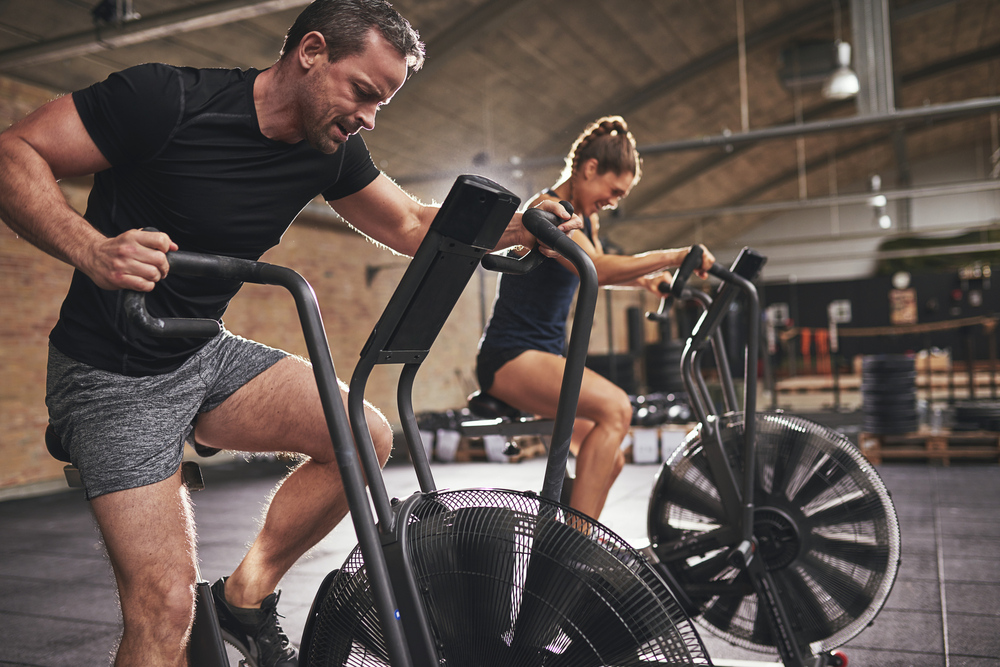
Selecting the Right Training Method for Your Fitness Goals
For an optimal fitness routine, it’s important to match your training method with your fitness objectives. Be it weight loss, muscle building, or boosting athletic performance, let’s examine how HIIT, Plyo, and Weight Training can contribute to achieving your goals.
Weight Loss
If your fitness goal revolves around weight loss and fat reduction, HIIT can be a particularly effective choice. Here are some benefits of HIIT:
- Increased calorie burn, helping you to burn calories efficiently
- Improvements in cardiovascular health
- Shorter workout time
- Higher metabolic rate even hours after the workout
Studies have demonstrated that HIIT can help individuals lose weight, reduce body fat, and waist circumference, particularly benefiting those who are overweight or obese. Moreover, it can lower blood sugar levels and improve insulin resistance, advantageous for those at risk of developing type 2 diabetes.
Integrating strength training with HIIT can enhance fat loss and is effective for maintaining a healthy weight.
Muscle Building
When it comes to muscle building and strength development, weight training takes the spotlight. Using heavier weights and engaging in progressive overload are essential strategies for building muscle. Compound exercises that work multiple joints and muscle groups simultaneously, such as squats, are efficient for increasing muscle mass.
Interestingly, HIIT can also contribute to muscle growth, particularly in less physically active individuals, in frequently used muscles during high-intensity workouts, particularly in the trunk and legs. Integrating HIIT with traditional strength training provides a robust stimulus for muscle maintenance and growth.
Athletic Performance
If enhancing athletic performance is your primary goal, both HIIT and Plyometrics can offer significant benefits. HIIT enhances performance in both anaerobic and aerobic activities, beneficial for athletes and those engaging in regular physical activities.
Plyometric training significantly improves peak power output, jump height in squat jumps and countermovement jumps, as well as sprint speeds over short distances, which are crucial for athletic performance. Concurrent training, which includes both HIIT and strength training, can improve athletic performance by increasing strength and endurance.
Combining Training Methods for Maximum Results
Given the myriad benefits of each training method, you may consider merging them for optimal results. Indeed, it’s possible! Let’s delve into the crafting of hybrid workouts and comprehend the benefits of a mixed approach.
Creating a Hybrid Workout
Creating a hybrid workout that incorporates elements of HIIT, Plyo, and Weight Training can be a game-changer for your fitness routine. One option is to begin with a HIIT session and integrate strength training within the recovery periods or add weights to the HIIT movements, such as with plyometric exercises.
Another hybrid option can involve a sequence of weighted strength exercises followed by cardio-intensive exercises, typically conducted in multiple circuits with 1-3 rounds, depending on your fitness level. To infuse HIIT into strength training, you can:
- Reduce the rest periods
- Incorporate compound movements
- Add cardio elements to lift heart rates
- Increase weights, transforming the lifting session into a dynamic HIIT-strength workout.
Benefits of a Combined Approach
A combined training approach offers several benefits. For starters, it significantly increases the variety in exercises, helping reduce workout boredom. HIIT workouts can be especially versatile and convenient, as they can be done at home without equipment using body weight for resistance.
More importantly, a combined training approach fosters overall fitness by including both cardiovascular exercise benefits from HIIT and strength benefits from muscle gain. Hybrid workouts that combine different methods can improve the efficiency of workout time, allowing the achievement of both cardiovascular and muscle strengthening goals in the same session.
Tips for Safe and Effective Workouts
While boosting your workout’s effectiveness is essential, safety takes precedence. Let’s unravel some crucial pointers for maintaining correct form and technique, progression and adaptation, along with rest and recovery.
Proper Form and Technique
Maintaining good form and technique in your workouts is critical to prevent injuries and maximize the effectiveness of your workout. Those new to HIIT or with medical conditions should consult a healthcare provider before starting and should consider programs led by a personal trainer to ensure safety.
A well-designed resistance training program, including strength training exercises, should be conducted at least two times a week on non-consecutive days, with a set amount of repetitions and exercises targeting major muscle groups for optimal safe practice. Moreover, focusing on bracing and strengthening your core can lead to improved posture, balance, and serve as a preventative measure against injuries.
Progression and Adaptation
The concept of progressive overload is vital in resistance training. It involves increasing the difficulty of workouts by enhancing factors such as:
- weight
- reps
- speed
- training volume
The body adapts to higher levels of stress to improve strength or performance, a concept known as supercompensation.
To progress with limited equipment, such as in home workouts, you can use bodyweight exercises, resistance bands, and implement creative modifications to increase difficulty.
Strength progress is often made by gradually increasing reps over several sessions before adding more weight, and then lowering reps to accommodate the new weight. Remember to incorporate deload weeks, periods of reduced training intensity, to prevent overtraining and promote recovery.
Rest and Recovery
Rest and recovery are as important as the workouts themselves. Overdoing high-intensity exercise without proper rest can result in:
- Increased cortisol levels
- Disrupted sleep
- Metabolism issues
- Joint stress
- Demotivation
Implementing HIIT workouts too frequently and without adequate rest can lead to:
- Muscular fatigue
- Overtraining
- Decreased workout quality
- Compromised well-being
The demanding nature of HIIT training may induce long-term anxiety and disrupt the body’s natural stress responses, underscoring the necessity of interspersing intense workouts with sufficient recovery.
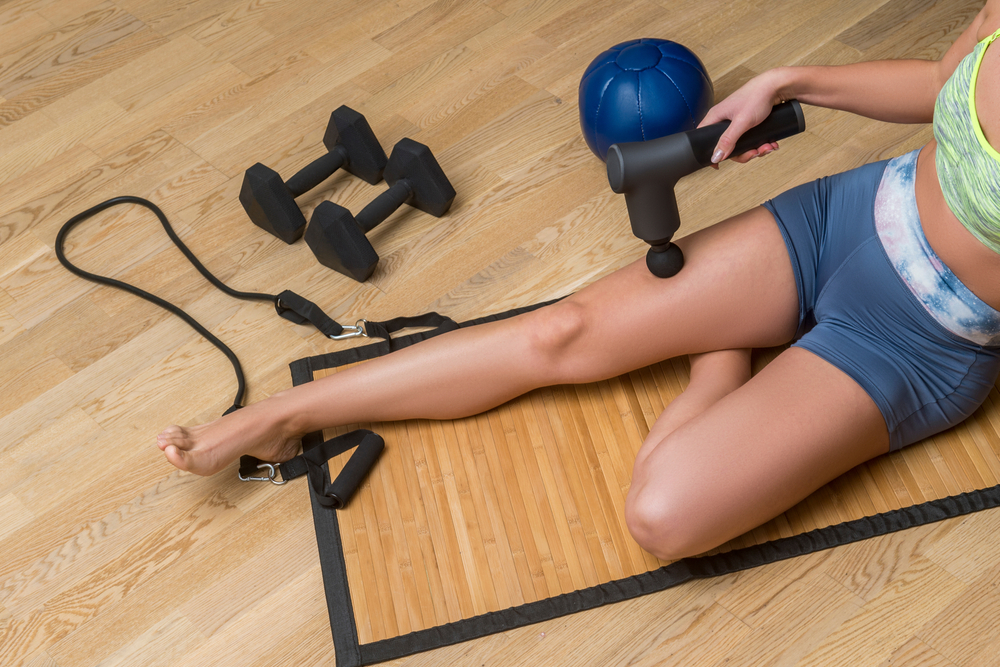
HIIT, Plyo, and Weight Training at Carbon Performance
Having delved into the intricacies of HIIT, Plyometrics, and Weight Training, each method evidently offers its own advantages, catering to a range of fitness goals. Whether it’s the high-intensity, time-efficient nature of HIIT, the speed and agility improvement from Plyometrics, or the muscle strength and endurance enhancement from Weight Training, these workout methods can be powerful tools in your fitness journey.
However, the real transformation can begin when you merge this methods at a gym able to meet each exercise with proper equipment and trainers ready to coach you through. At Carbon Performance, you have the ability to implement HIIT, Plyo, and weight training into your current workout routine with the help of our state of the art gym equipment and personal trainers. You can also experience forms of these exercises in our group classes like:
- Cycling
- Les Mills Body Pump
- Endurance
Learn more about all things fitness offered at Carbon Performance at our website, or contact your nearest location for more information. We look forward to hearing from you, and joining alongside your fitness journey, to a better, stronger, and healthier YOU!
FAQs on HIIT, Plyo & Weight Training
How Can Sports be Incorporated into a HIIT Routine?
Sports can easily be incorporated into a HIIT routine by ensuring the routine is hitting the HIIT hallmarks like:
- Sport movements that encompass short burst of high energy and intensity
- Short recovery periods
Here are some common HIIT focused sports to incorporate into your next workout routine:
- Boxing
- Swimming
- Running (think track and field style)
- Basketball
You can get as creative as you would like when incorporating sports into a HIIT routine by including short intervals of intensity, followed with brief recovery.
Which Type of Exercise is Best for Mental Health Benefits?
HIIT, plyo, and weight training can all equally improve overall mental health. With this in mind, you can curate a personal workout routine that focuses on either HIIT, plyo, or weight training knowing that it is sure to boost your mood.
Which Type of Exercise, HIIT, Plyo, or Weight Training is Best for Building Absolute Strength?
If you’re looking to build overall muscle and strength, then aim for routines focused on weight training. However, including HIIT and plyo exercises into your workout routine can help improve cardiovascular health and power.
Can HIIT, Plyo and Weight Training all be Incorporated into one Workout?
Yes, HIIT, plyo, and weight training can all be incorporated into one workout more easily than you may think. Here is one simple breakdown of a 50 minute workout routine that utilizes all three of these exercises:
Warm Up – 5 minutes
- Bodyweight squats (8 reps)
- Forward lunges (10 total)
- High knees (10 total)
- High rise to plank (4 reps)
Circuit 1 – HIIT & Plyo Focus – 10 minutes (repeat)
- Burpees (6 – 10 reps)
- Box jumps (6 – 10 reps)
- Mountain climbers (6 – 10 reps)
- Lateral skater jumps (6 – 10 reps)
- Push ups (6 – 10 reps)
Circuit 2 – Weight Training Focus – 10 minutes (repeat)
- Dumbbell squats (8 – 12 reps)
- Deadlifts (8 – 10 reps)
- Forward lunges with dumbbell (8 – 10 each side)
- Step-ups with dumbbell (8 – 10 each side)
Circuit 3 – HIIT & Plyo Focus – 10 minutes (repeat)
- Jumping lunges (8 – 10 each side)
- Plank to push up (8 – 10 reps)
- Broad jumps (8 – 10 reps)
- High Knees (8-10 reps)
Circuit 4 – Weight Training – 10 minutes (repeat)
- Dumbbell bench press (6 – 10 reps)
- Bent-over rows with dumbbells (6 – 10 reps)
- Dumbbell shoulder press (6 – 10 reps)
- Dumbbell swings (6 – 10 reps)
Cool Down – 5 minutes
- Hamstring stretch
- Chest stretch
- Child’s pose
Is Plyometrics or Weight Training Better?
Plyometric training is more beneficial for improving running economy at faster speeds compared to heavy resistance training. However, weight training is best for cross-training days or hypertrophy training.
Is Weight Training More Effective Than HIIT?
Both weight training and HIIT have their own unique benefits, with strength training being effective for building muscle size and supporting fat burning, while HIIT is more efficient in burning calories, improving cardiovascular health, and triggering the afterburn effect. Both forms of exercise are effective in promoting muscle growth, fat burning, and overall wellness.
What is the Difference Between Plyo and HIIT Workouts?
In conclusion, the key difference is that plyometric workouts focus on explosive power without necessarily including set breaks, while HIIT workouts involve high-intensity exercises with set rest periods.
Can You Build Muscle with Plyo?
Yes, using plyometric exercises can effectively help in building muscle size and increasing strength, especially when executed with proper form and technique. Studies have shown that plyometric training has the potential to induce muscle size increases similar to those observed with resistance training.
